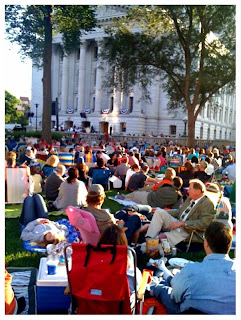





I'll keep saying it because it's true: I love photographing for the Madison WI chapter of Flashes of Hope. Trudy, the coordinator, is wonderful. The kids are an inspiration to me. They're strong, resilient, sometimes joyful, but also tentative, vulnerable, uncertain; sometimes tearful, other times full of laughter. They're tired of disease and the smell of hospitals and the machines of treatment. But they're riding with it.
I love being able to participate with other volunteers to provide portraits of these kids and their families during a very difficult time for them, a season of life when the last thing they'd be doing is scheduling portrait sessions. It's a beautiful gift to them, and who wouldn't love a chance to help make and give a beautiful gift to someone who's hurting? It's a privilege.
For an afternoon, we convert a conference room in the UW Children's Hospital into a "cozy" studio (smaller by a couple feet and it almost wouldn't work) and after any special makeup or selection of wigs or hats, we make a few photographs together to record this journey. Sometimes it's just the child, other times mom or dad or grandparents or siblings join in. The child might be a year old, or a teen.
The most difficult portrait I've made in the four times I've done this so far has been a trip to a 4 year old boy's hospital room a few weeks ago, he was immobile and unable to come to the studio, after surgery on his spine that week. We made some memorable portraits I think, but it was especially difficult for me -- trying to be sensitive to the mood in the room and to his pain; not wanting to intrude or disrupt his quiet; but also wanting to make some meaningful portraits of him and his sister and mom since they had accepted the offer from FOH. I haven't posted any of those portraits, they are somehow too personal and intense for me to feel comfortable yet, portraying them here.
Setup info for anyone who cares: these portraits are all shot with one light (a White Lightning X1600) through a 47" softbox, camera left; a white reflector camera right; and in this case, far enough away from the unlit canvas backdrop (somehow, in the tiny conference room) for falloff to render it very dark or black. Triggered with Pocketwizards. I like the soft light of the big softbox. I shoot with a 50mm 1.4 or a 105mm 2.8 or a 24-70 2.8 at 70mm; in all cases usually close to wide open aperture. I focus on the near eye and let the rest fall where it may. For groups, I stop down a little to gain some depth of field. I'm going to experiment next time with the background. I process everything in Adobe Lightroom, a wonderful tool.
We keep some stuffed toys at hand, and some bubbles. One of my tricks with kids is a stretchy bouncy squeezy goofy rubber thing (quick, trademark that name) from Walgreens which I sometimes rubberband to the lens hood. With very young kids, it gives me 1-2 minutes of curiosity, smiles, maybe even laughter, directed at my lens. Then they're bored with it. :-)
So that's the tech and gear side of things, which all needs to be reliably in place, well exposed and composed, in focus. A few dozen parameters to keep in mind. But all of this needs to become second-nature, because the most important part of portrait photography is helping the subject feel comfortable with me, with the room, with the process; and inviting them to participate in making the photographs. It's an invitation for them to let their personality show, and sometimes, if they're willing, to reveal some of their feelings about this difficult road they're traveling. All of that in a 10 or 15 minute window, with a total stranger, lights and lenses.
I don't mean to speak about this like I'm an expert who has arrived or figured it out, because I'm not. I always feel like I'm still learning and still have so much more to learn. Every person comes into the room with a unique personality and emotional, psychological, spiritual and physical presence. For a photographer, this is 9% physics and science, and 91% improvisation and adaptation. (For you math zealots: the other 28% is luck.)
I'm partly afraid of this (fear can be healthy!) and partly invigorated by the challenge because I enjoy collaborating with each person to make portraits which represent who they are (love overcomes fear!). When it all comes together just right, a portrait seems to reveal something genuine about who a person is inside.
Sometimes, after they leave the room, I think about what I should have done or said differently to make the mood, the process, the experience, and the outcome even better. That's learning, and I love it. Wouldn't photography be boring if there were no fear, no failure, nothing more to learn, no more room for improvement?
If you've read this far, thanks for reading, and please share your own thoughts or questions in the comments. And check out Flashes of Hope.
















